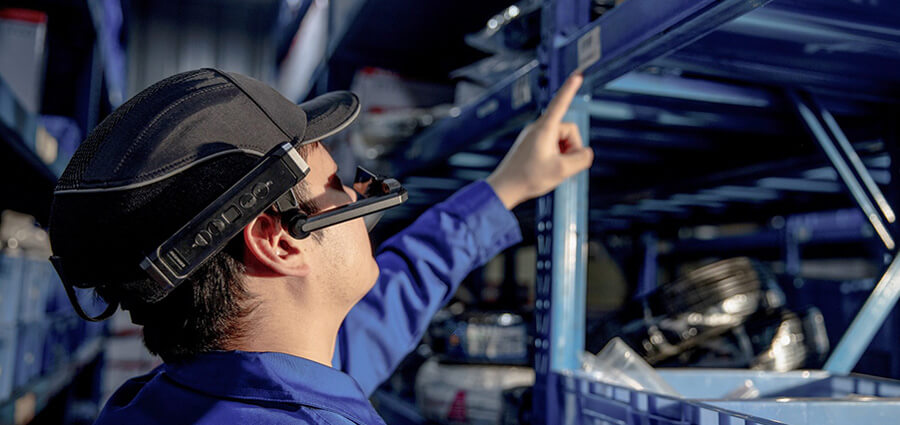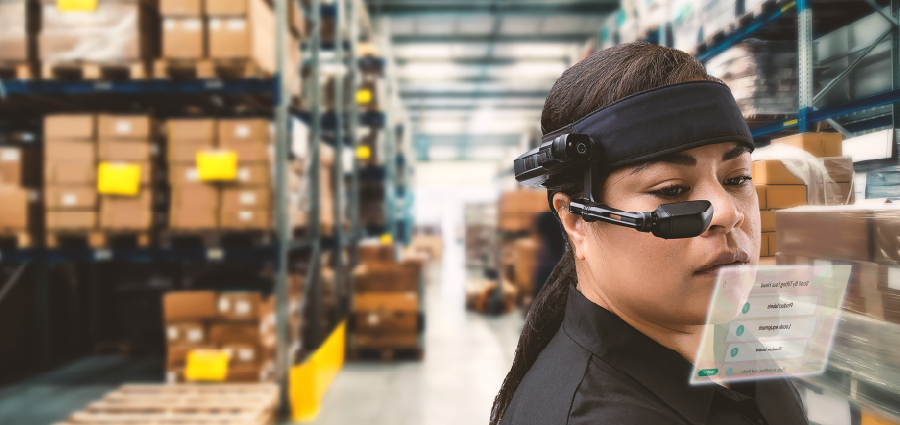In the world of warehouse management, efficiency is key. Every second counts and technology that can streamline processes is in high demand. One such innovation is vision picking, which we can link to an RFID wrist scanner. Let’s take a closer look at what this technology entails, what its benefits are and how it compares to traditional 1D/2D wrist scanners.
Picking innovation – vision picking and RFID wrist sensor
RFID wrist sensors
RFID wrist sensors are another feature that increases picking efficiency and accuracy. The wrist scanner has an RFID reader built into it that reads individual RFID tags. These labels can be easily replaced with conventional barcode labels without any intervention in the WMS/ERP system.
What is Vision Picking?
Vision picking is an advanced technology that uses augmented reality (AR) smart glasses. These glasses provide the warehouse worker with a digital display that shows real-time instructions while giving them both hands free to work.
Benefits of Vision Picking with RFID wrist sensor
- Absolutely hands-free: Unlike ordinary wearable sensors, the warehouse worker has absolutely hands-free. The RFID sensor is on the wrist and does not restrict the warehouse worker from handling any warehouse items, which increases productivity and improves ergonomics.
- Increased accuracy: Thanks to this technology, the picker immediately knows if he is picking the right product when his hand approaches the RFID tag. It absolutely eliminates the need to search and aim at the 1D/2D product label along with pulling the trigger on the 1D/2D sensor, increasing efficiency and making the overall process easier.


- More efficient multipick: RFID wrist scanners allow for faster scanning of multiple items at once, whereby the picker does not have to scan individual items, but with each individual pick is able to immediately validate the product they are picking, whereas with conventional finger and/or wrist scanners, direct contact and ensuring the correct distance to scan is required.
- Cost: While RFID technology may have a higher initial investment cost compared to traditional barcode scanning technologies, the long-term benefits of efficiency and accuracy can fully cover this investment.
The combination of smart glasses and RFID wrist sensors represents a significant advance in warehouse management. It is in this connection that we are using and linking two modern technologies with each other. By combining the benefits of augmented reality with RFID technology, individual warehouses can achieve unprecedented levels of efficiency, accuracy and improved ergonomics.

